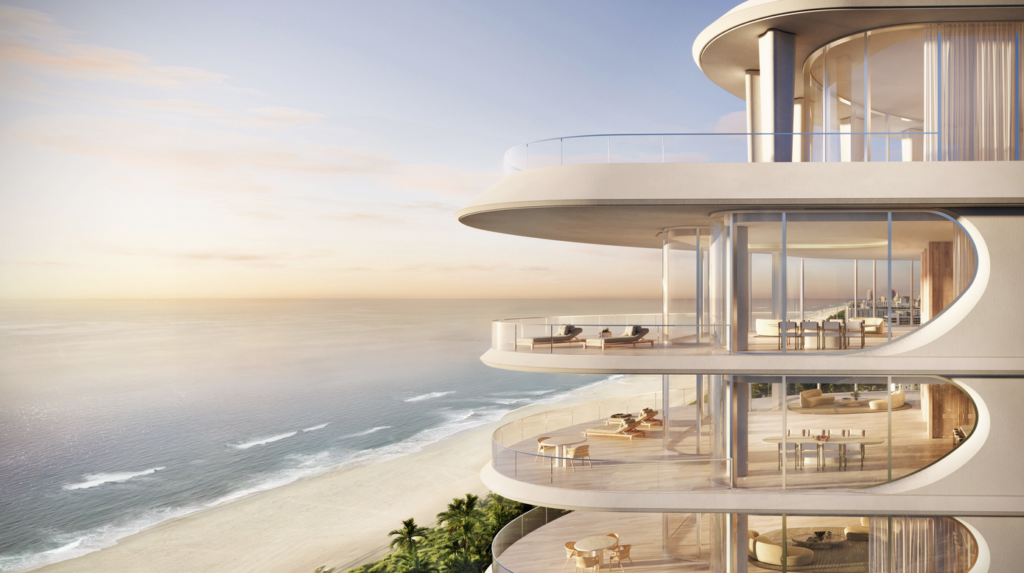Buying Early Has Its Perks, But Do You Understand the Payment Terms?
If you’re exploring the world of pre-construction real estate, you’ve probably heard the term “deposit structure.” And if you’re serious about investing in Florida’s pre-construction condo market, especially in hot spots like Miami, Fort Lauderdale, or West Palm Beach, understanding how deposit structures work for pre-construction condos is critical.
Unlike traditional home purchases, where a buyer puts down 5–20% at closing, pre-construction condo purchases involve multiple staged deposits paid over time. These deposits are what secure your unit and they can vary widely based on location, developer, market demand, and buyer profile.
In this post, we’ll break down everything you need to know about how deposit structures work for pre-construction condos, who they benefit, and how to use them strategically.
What Is a Deposit Structure?
A deposit structure is the schedule of payments a buyer agrees to make before the final closing of a pre-construction condo.
Instead of putting down one lump sum at the time of purchase, buyers make a series of smaller payments throughout the construction timeline, often tied to milestones or timeframes (e.g., 30 days after signing, 6 months later, etc.).
This structure provides benefits to:
- Buyers, who can secure a property without full upfront payment
- Developers, who use deposits to finance the construction process
Typical Deposit Structure in Florida Pre-Construction Condos
While deposit schedules vary by project and developer, here’s a common example of a Florida pre-construction condo deposit structure:
| Timing | Amount Due |
|---|---|
| At Reservation | $10,000–$20,000 (fully refundable) |
| At Contract Signing (30 days) | 10% of purchase price |
| 3–6 Months After Contract | Additional 10% |
| 6–12 Months After Contract | Another 10% |
| At Roof Completion (Top-Off) | 5%–10% |
| At Closing (2–3 years later) | Remaining balance (usually 50–60%) |
Why Developers Use Tiered Deposit Structures
Pre-construction is a high-risk endeavor for developers. Before they break ground, they need to:
- Secure enough presales to obtain financing
- Demonstrate buyer commitment to investors and lenders
- Fund early construction and marketing costs
The deposit structure is how developers share risk with buyers. It ensures serious interest, reduces cancellations, and injects early capital into the project.
How Deposit Structures Benefit Buyers
1. Staggered Cash Outflow
Instead of needing 20–30% upfront, you can spread payments over 12–36 months, allowing more time to manage cash flow or sell other assets.
2. Leverage Appreciation
By the time your unit is built, its market value may have increased significantly. That means your original deposit could represent a smaller percentage of the final value, giving you instant equity.
3. Time to Plan Financing
You don’t need a mortgage at the time of signing. Buyers have years to:
- Improve credit
- Secure better loan terms
- Plan their exit strategy (rent, sell, or move in)
Examples of Deposit Structures in the Florida Market
Let’s take a look at a few real-life examples from Miami pre-construction developments to illustrate how deposit structures can vary:
🔹 St. Regis Residences, Miami
- 10% at contract
- 10% six months later
- 10% at top-off
- 10% at closing
→ Total: 40% before completion
🔹 The Perigon Miami Beach
- 20% at contract
- 10% six months later
- 10% at top-off
→ Total: 40% before closing
🔹 E11EVEN Residences Beyond
- 10% at reservation
- 10% at contract
- 10% six months later
- 10% at top-off
→ Total: 40% deposit
Some developers may even offer incentive structures like:
- Extended deposit timelines
- Reduced deposits for cash buyers
- Flexible milestone-based payments (e.g., “10% at foundation,” “10% at 15th floor,” etc.)

Foreign Buyers: What You Need to Know
If you’re a foreign buyer, Florida developers often require:
- Higher deposits (sometimes 50%) to offset financing risk
- Proof of funds and additional documentation
- Payments in U.S. dollars
However, the staged payment system still makes it easier to enter the market without financing. Some foreign investors even use currency exchange timing to their advantage, buying during strong conversion periods to save thousands.
Risks and Considerations with Deposit Structures
1. Deposits Are Often Non-Refundable After Contract Signing
Once you sign the purchase agreement (not the initial reservation), your deposits are generally non-refundable unless the developer defaults or the project is canceled. Make sure:
- You fully understand your timeline
- You’re comfortable with the risk
- You work with an experienced agent and real estate attorney
2. No Guarantee of Appreciation
While many projects gain value during construction, there’s no guarantee. Market conditions can shift. Buying in prime locations with strong fundamentals (e.g., Brickell, Edgewater, Wynwood) helps hedge this risk.
3. You Still Owe the Final Balance
At closing, you’ll need to pay the remaining 50–60% usually through a mortgage. Make sure you:
- Monitor lending conditions
- Work with a lender familiar with pre-construction
- Lock rates early if possible
How to Use Deposit Structures Strategically
🔸 Time Your Purchase Based on Market Cycles
Buying early in a project usually gives the best unit selection and pricing—and the longest runway to complete deposits. If you’re confident in the developer and location, acting early can be a smart long-term move.
🔸 Use Deposit Timelines to Diversify
Some investors buy multiple pre-construction units with staggered delivery dates and deposit schedules. This allows you to:
- Manage capital more effectively
- Sell or lease one before closing on the next
- Spread your market risk
🔸 Negotiate with Developers
In slower markets, developers may offer:
- Custom deposit structures
- Incentives like furnishings or closing credits
- Referral bonuses or early access
Working with an agent who has developer relationships can unlock better deals than what’s publicly advertised.

Final Thoughts: How Deposit Structures Work for Pre-Construction Condos
Understanding how deposit structures work for pre-construction condos is essential for making smart, informed investment decisions—especially in dynamic markets like Florida.
To recap:
- Deposit structures are staggered payments (typically 30–50%) paid over time
- They benefit both buyers and developers by spreading risk and cost
- Knowing the structure helps you plan your cash flow, financing, and exit strategy
- Every developer and project is different, read the fine print and get expert guidance
Ready to Invest in Pre-Construction?
We help investors, foreign buyers, and lifestyle buyers secure the best pre-construction condos across South Florida. Our team can guide you through deposit structures, project comparisons, and long-term ROI strategies.
👉 [Browse Our Pre-Construction Projects in Miami]
👉 [Book a 15-Min Strategy Call With a Condo Investment Expert]

